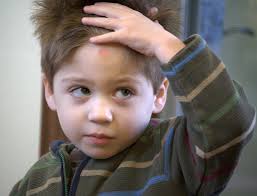How to better diagnose traumatic brain injury in infants?
 Because young children can’t express themselves proprely it can be challenging for doctors to diagnose a traumatic brain injury or concussion. A recent article published in Pediatric Emergency Care suggests that using previous “Characteristics of Diagnosed Concussions in Children Aged 0 to 4 Years Presenting to a Large Pediatric Healthcare Network” might be helpful. The study was authored by Podolak, Olivia E. MD*; Chaudhary, Sofia MD*,†; Haarbauer-Krupa, Juliet PhD‡; Metzger, Kristina B. PhD, MPH*; Curry, Allison E. PhD, MPH*,†; Kessler, Ronni S. MEd*; Pfeiffer, Melissa R. MPH*; Breiding, Matthew J. PhD‡; Master, Christina L. MD, CAQSM, FACSM*,§,∥; Arbogast, Kristy B. PhD*,†,§ (Click here For author Information)
Because young children can’t express themselves proprely it can be challenging for doctors to diagnose a traumatic brain injury or concussion. A recent article published in Pediatric Emergency Care suggests that using previous “Characteristics of Diagnosed Concussions in Children Aged 0 to 4 Years Presenting to a Large Pediatric Healthcare Network” might be helpful. The study was authored by Podolak, Olivia E. MD*; Chaudhary, Sofia MD*,†; Haarbauer-Krupa, Juliet PhD‡; Metzger, Kristina B. PhD, MPH*; Curry, Allison E. PhD, MPH*,†; Kessler, Ronni S. MEd*; Pfeiffer, Melissa R. MPH*; Breiding, Matthew J. PhD‡; Master, Christina L. MD, CAQSM, FACSM*,§,∥; Arbogast, Kristy B. PhD*,†,§ (Click here For author Information)
The researchers analyzed the medical data of 329 young patients aged 0 to 4 who visited the Children’s Hospital of Philadelphia healthcare network from October 1, 2013, to September 30, 2015 . They identified the 3 top common mechanisms of injury.
The first one was fall and represented 64.4 % of all young patients who were diagnosed with a concussion with children younger than 2 year old being at a higher risk of sustaining a concussion in a fall than children from 2 to 4 year old. Falling from furniture was the most common type of fall leading to traumatic brain injury, followed by tripping and hitting the ground and falling down the stairs.
The second most common mechanism of injury leading to infant concussion is “struck by object“. 20.1% of patients studied were diagnosed with TBI after being struck by objects.
8.1 % of them suffered concussion in a car accident which was the third most common mechanism of injury.
The researchers then identified the most common symptoms reported by parents.
Among the somatic symptoms that were reported in 64.4% of the cases, the most common was vomiting followed by headache and nausea. Almost half of the parents whose child was diagnosed with TBI reported sleep symptoms. A little bit more than 20% had emotional symptoms another 20% reported visio-vestibular symptoms with somatic and visio-vestibular symptoms being more often reported for children between 2 and 4 year old.
The entire study can be found here
Picture: Courtesy of flickr
 New York Personal Injury Attorneys Blog
New York Personal Injury Attorneys Blog


